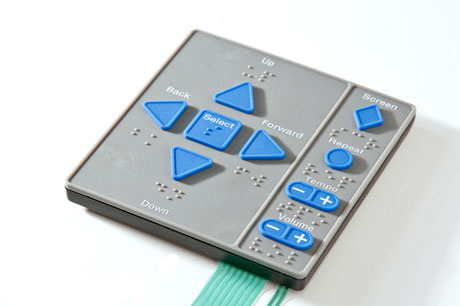Membrane Changes Explained: A Comprehensive Guide to Their Advantages
Membrane layer switches over represent a versatile and advanced solution for producing user interfaces across a variety of markets. Their multilayered style not just makes sure capability through straightforward pressure yet also offers significant benefits, such as resilience and personalization. As sectors increasingly seek efficient and trustworthy control interfaces, recognizing the particular benefits and applications of membrane switches becomes crucial. Nevertheless, the intricacies of their layout and execution existing unique difficulties that advantage more detailed evaluation. What variables should be thought about to completely take advantage of their potential in contemporary applications?
What Are Membrane Layer Buttons?

When stress is related to the membrane layer button, the layers make call, finishing an electric circuit. This straightforward device permits a large range of applications, from consumer electronics to commercial machinery. Membrane layer buttons are often made to be resistant and waterproof to dust and contaminants, making them ideal for atmospheres where resilience is important.
Additionally, the flexibility of the materials used in membrane layer switches facilitates ingenious layouts that can comply with numerous forms and measurements. This adaptability adds to their appeal in varied areas, including medical tools, vehicle controls, and home appliances. On the whole, membrane switches stand for a crucial element in modern interface innovation, connecting the space between customers and electronic systems.
Key Advantages of Membrane Buttons
Among the myriad of interface alternatives readily available, membrane switches over stick out for their special mix of benefits. One of the key advantages is their compact and light-weight design, which permits combination into a vast array of tools without adding significant bulk. This is especially helpful in applications where space is limited.
Furthermore, membrane layer switches offer toughness and resistance to ecological factors. They are generally constructed with products that can stand up to wetness, dirt, and different chemicals, making them appropriate for rough problems. This longevity contributes to a much longer lifespan compared to traditional mechanical buttons.
Another substantial benefit is the flexibility in personalization. Membrane layer buttons can be published with different graphics, colors, and textures, enabling customized layouts that satisfy particular branding or practical demands. This versatility encompasses the variety of layers and circuit alternatives, supplying engineers with multiple setups.
Furthermore, the tactile responses given by some membrane layer changes improves individual experience, making them a lot more user-friendly to run. Finally, the simplicity of cleansing and upkeep additionally strengthens membrane switches as a functional option in both consumer and industrial applications. Membrane Switches. On the whole, these essential advantages make them a recommended remedy for numerous developers and makers
Applications in Numerous Industries
Just how do membrane layer buttons find their location across varied industries? Their versatility and performance make them important parts in sectors ranging from health care to consumer electronic devices. In clinical tools, membrane switches are utilized for their simplicity of cleansing and resistance to contamination, making sure hygiene in atmospheres where sterility is vital.
In the consumer electronics industry, these buttons give smooth, user-friendly interfaces that boost product aesthetic appeals while preserving durability against deterioration. Automotive applications take advantage of membrane changes as well, where they are used in dashboards and control board, supplying reputable efficiency in difficult problems.
Additionally, industrial machinery utilizes membrane layer buttons for control panels because of their robustness, capacity to stand up to extreme environments, and adjustable layouts that accommodate details operational needs. The food market leverages membrane layer switches for their convenience of usage and resistance to spills, guaranteeing functional efficiency in busy setups.
Ultimately, the versatility of membrane switches throughout these diverse applications highlights their necessary function in modern-day technology, boosting individual communication while satisfying industry-specific demands. Their her explanation continued evolution assures further integration right into arising fields and innovative items.
Layout and Customization Options
The layout and personalization choices available for membrane switches are essential for tailoring interfaces to meet certain individual needs and aesthetic preferences. These buttons can be developed in different shapes, sizes, and formats, allowing for smooth assimilation into varied applications. The flexibility in layout means that producers can produce special interfaces that enhance use and keep brand name identification.
Personalized graphics, textures, and colors can be used to the surface area of the membrane switch, offering an opportunity for branding and customer involvement. Furthermore, backlighting options, such as LED illumination, can be integrated to improve visibility in low-light problems, therefore boosting functionality.
Useful aspects can also be personalized, including tactile responses and actuation pressure, which can be gotten used to fit various customer interactions. The selection of materials, such as polyester or polycarbonate, enables variants in longevity and environmental resistance, accommodating the particular needs of different industries.
Eventually, the comprehensive layout and modification capacities of membrane layer buttons make it possible for business to develop aesthetically enticing and easy to use user interfaces, making certain that their products satisfy both aesthetic and functional requirements efficiently. Membrane Switches.
Factors To Consider for Execution
Applying membrane layer changes requires careful factor to consider of numerous factors to make certain optimal functionality go to this website and customer experience. One of the main factors to consider is the designated application atmosphere. Elements such as exposure to moisture, severe temperature levels, and chemical materials can substantially affect the switch's performance and longevity. Choosing products that endure these conditions is vital.

An additional vital element is the switch's style and format. Guaranteeing that the tactile comments and actuation force straighten with user expectations enhances functionality. Conducting user screening can supply useful insights right into the optimal design.
In addition, compatibility with electronic parts must be assessed. The switch's wiring should straighten with the overall system architecture, making certain trusted signal transmission and decreasing interference.
Additionally, manufacturing methods and costs must be reviewed. The selection in between personalized styles and typical models can lead and influence both budget time.
Lastly, consider repair and maintenance. Membrane layer buttons might require particular cleaning and care treatments to keep their appearance and functionality in time. By dealing with these considerations, organizations can execute membrane layer buttons that meet their functional demands while offering a favorable user experience.

Conclusion
In verdict, membrane switches stand for a flexible and long lasting control user interface appropriate for a wide variety of applications throughout multiple industries. Their portable style, resistance to environmental aspects, and adjustable features improve individual experience while conference particular branding demands. As innovation continues to progress, the significance of membrane buttons in modern-day tools stays substantial, supplying both functionality original site and aesthetic allure. Future innovations will likely even more increase their applications and efficiency in numerous atmospheres.
Membrane layer changes represent a functional and sophisticated option for producing user interfaces across a selection of fields.Recognizing the essential elements of modern electronic user interfaces, membrane layer switches are a kind of customer interface tool that are composed of flexible, thin layers of material. In general, membrane switches represent an essential component in contemporary customer interface modern technology, connecting the gap between users and digital systems.
Among the myriad of user interface alternatives available, membrane layer changes stand out for their special mix of benefits.The layout and customization choices readily available for membrane layer buttons are critical for customizing interfaces to fulfill certain user demands and aesthetic choices.